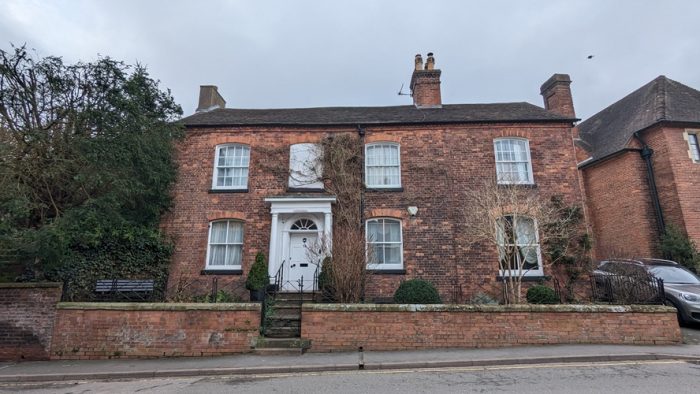- Home
- /
- Nunn research
- /
- Suffolk & Essex Nunns...
- /
- John Nunn of Colchester,...
John Nunn was born in Earl Stonham in about 1750, the son of Joshua Nunn and Mary Baker. He moved to Colchester, where he worked as a wine and brandy merchant, and lived in a property on North Hill, in St Peter’s parish.
On 8 October 1778, John married Esther Everett at St Peter’s, Colchester. The witnesses were Walter and Martha Bedell and Mary Nunn. The latter was perhaps John’s mother, or his sister Mary.
They had several children, all baptised at St Peter’s, and seven of them were still alive in 1807, when John wrote his will.
- Mary Ann, 1778
- John, 1782
- Joshua (baptised as Hastings Joshua), 1783
- Esther (baptised as Esther Sarah), 1785
- William, 1786
- Preston, 1789
- Elizabeth Glassiott, 1793
John wrote his will on 2 September 1807, mentioning only his wife and his seven children. He was buried at St Peter’s, Colchester, on 26 December 1807, aged 57.
His son Hustings Joshua Nunn married Mary Ann Watkins at St Peter’s on 4 November 1818 – he lived in Mile End (Myland), Colchester, at the time, and worked as a yeoman. Their ten children were baptised in Myland between 1820 and 1835: Mary Anne, Elizabeth Mary, Esther, Joshua, Frances, Joshua, John, William, Preston, and Susannah.
His daughter Esther Sarah Nunn married Edward Gray at St Peter’s on 19 July 1822. The witnesses were Elizabeth Nunn and Joshua Nunn, presumably the bride’s siblings.
His daughter Elizabeth Glassiott Nunn married Rev William Chaplin, perpetual curate of South Hylton Ferry Durham, at St Peter’s on 23 June 1829. He had studied at Queen’s, Cambridge.
His daughter Mary Ann Nunn wrote two hymns, “O How He Loves” and “One There is Above All Others”, with her brother John. She died on 27 February 1847, and left everything, including her property on North Hill, Colchester, to her sister Elizabeth Glassiott Chaplin, who by then was a widow. According to the 1841 census, Mary Ann and Elizabeth Glassiott Chaplin, were running a ladies’ school, with 18 pupils living in.
Three of John’s sons, John, William, and Preston studied to become clergymen. John and William were both sizars at St John’s – this means that the college partly supported them and they conducted various menial tasks. One of St John’s most famous sizars is Patrick Bronte, father of the Bronte sisters, and in fact John Nunn and Patrick Bronte were close friends. According to Judith Barker’s “The Brontes”, while Patrick was in Wethersfield, Essex, he went to Colchester, and met Rev Robert Storry, who was St Peter’s vicar (and was one of the witnesses to John’s will). The church was evangelical in nature, which appealed to Patrick. Evidently the evangelism of their parish church touched the Nunn family, in order for John and Esther’s seven children to produce two vicars and a hymn writer!
William became famous, working in a poor area of Manchester, where he was the minister of St Clement’s church. He caused controversy with his High Calvanist views, and an entire chapter of Ian J Shaw’s book High Calvinists in Action: Calvinism and the City, Manchester and London, 1810-1860 is about him. He was written about in the Baptist periodical The Sower, which talks about how he found his calling to become a cleryman, and gives some interesting information about his family. Apparently, he was going to be sent to London, to be apprenticed to his uncle James Nunn the bookseller, but James turned him down. Someone wrote a book about him not long after he died, but it’s very rare, and no online digitised versions are available.
William had two sons, Joseph and Samuel, who also studied at St John’s, Cambridge, and became clergymen. Joseph’s son Henry Preston Vaughan Nunn, and Samuel’s son Harry Nunn, trod the same path. It was Samuel who applied for a coat of arms for all the descendants of his father, William Nunn.

Preston was the curate at Church Stretton in Shropshire for a very long time. The town is a curious parallel with the Bronte’s Haworth, as it is surrounded by high land, the Long Mynd and Wenlock Edge, and can feel quite cut off. Preston outlived all but one of his children, and none of them had children themselves. I have visited twice, looking for evidence of Preston in Church Stretton, but couldn’t find his family’s headstones in the churchyard or the cemetery. I did, however, see the house where he and his family lived for many years (see photo above), which isn’t far from the church where he devoted so much of his life.
By Helen Barrell
First published January 2024
Edited March 2024 to expand information on John, William, and Preston.
